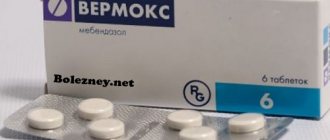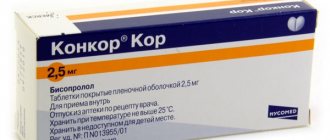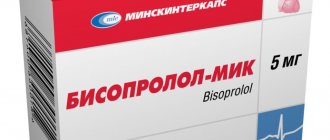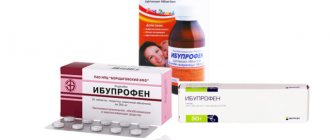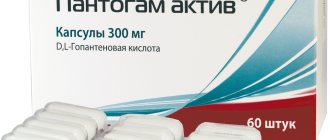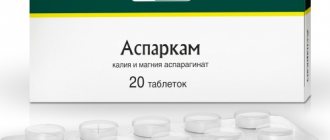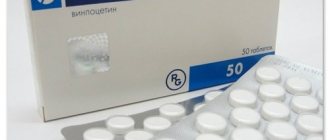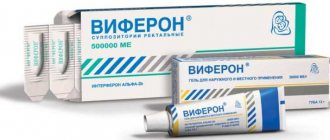Sumamed is prescribed to children quite often. Perhaps it is in second place in terms of frequency of use among antibiotics in children after flemoxin. Some parents love him very much. And they ask to assign it to the child. When will sumamed be effective? Let's figure it out together.
The active ingredient in sumamed is azithromycin. It is a broad-spectrum antibiotic from the group of 15-member macrolides. It is produced in powder for suspension in dosages of 100 mg/5 ml and 200 mg/5 ml, in the form of soluble tablets of 125, 250, 500 and 1000 mg and in capsules. For dose selection, storage, transportation, and oral administration, sumamed is a very convenient drug. Children are allowed to take Sumamed from six months in the form of a suspension and from 3 years of age in the form of dispersible tablets.
Compound
In this antibiotic, the active component is azithromycin in a dosage of 125 or 500 mg.
The excipients in the drug "Sumamed" are:
- anhydrous calcium hydrogen phosphate;
- pregelatinized and corn starch;
- hypromellose;
- sodium lauryl sulfate;
- magnesium stearate;
- microcrystalline cellulose.
The composition of the tablet shell is formed by the following components:
- polysorbate 80;
- hypromellose;
- titanium dioxide;
- indigo carmine dye;
- talc.
The drug is placed in blisters of three and six pieces.
But before we tell you what Sumamed tablets help with, we need to mention that the drug also has a second dosage form in the form of gelatin capsules No. 1, placed in a blue case with a blue lid. Inside there is either a white powder or a light yellow dense mass that disintegrates quite easily when pressed.
The active substance is azithromycin at a dosage of 250 mg. The auxiliary components are as follows:
- indigo carmine;
- microcrystalline cellulose;
- gelatin;
- sodium lauryl sulfate;
- titanium dioxide;
- magnesium stearate.
The medicine is packaged in blisters containing six capsules. Dispensed by prescription. Shelf life is three years.
Another dosage form is a suspension (syrup), sold in 100 ml bottles.
Read more about what Sumamed helps with
The drug is used for pathologies of an infectious-inflammatory nature, including:
- infectious diseases of the respiratory tract;
- infections of soft tissues and skin (dermatoses, secondarily infected, impetigo, erysipelas);
- infectious defects of the genitourinary system, cervicitis, urethritis;
- damage to the ENT organs.
Speaking about what Sumamed helps with, it should be said that it is also used at the initial stage of Lyme disease and for erythema migrans.
Indications for use
The use of Sumamed makes sense when an infection caused by microorganisms sensitive to it is actively developing in the body. It could be:
- Infections of ENT organs. This includes rhinitis - an active bacterial runny nose that prevents a person from breathing, concentrating normally on anything and sleeping peacefully, threatening to turn into sinusitis. This includes otitis - inflammation of the ear, from the outer part to the inner, which, without proper treatment, is fraught with hearing loss. This also includes sinusitis, frontal sinusitis, labyrinthitis - inflammation of the sinuses, in which the patient suffers from severe headaches, complete nasal congestion and in the future has a loss of smell, vision and meningitis.
- Upper respiratory tract infection. These include laryngitis, pharyngitis and tracheitis. It may be difficult for a person far from medicine to distinguish them, since they are all accompanied by a cough, a feeling of dryness and irritation of the mucous membranes, pain when swallowing, and often hoarseness of the voice. The whole difference is in which part of the respiratory tract the infection has captured. For laryngitis - the larynx, for pharyngitis - the pharynx, for tracheitis - the trachea. All of them are fraught with the fact that inflammation will spread to the lower respiratory tract.
- Bronchitis. Refers to lower respiratory tract infections, can be chronic in the acute stage or simply acute. It is usually accompanied by a dull, hoarse cough, chest pain, expectoration of purulent sputum, and shortness of breath when trying to engage in physical activity. As a rule, when patients come to be prescribed Sumamed for a cough, they have bronchitis.
- Pneumonia. Pneumococcus, the causative agent of pneumonia, is quite sensitive to Sumamed. The disease itself also refers to lower respiratory tract infections and is more acute than bronchitis - with pain, fever, and acute symptoms of inflammation. The patient has difficulty sleeping, has no appetite, and feels heaviness in the chest. Before the invention of antibiotics, pneumonia was fatal.
Sumamed is used not only for respiratory tract infections. It is also prescribed for diseases of soft tissues and skin diseases, for infections involving the genitourinary tract and pelvic organs. For rare diseases of the stomach and duodenum.
But still, most often it is used specifically to treat inflammation of the respiratory system.
It is interesting that Sumamed injections are prescribed only for community-acquired pneumonia, which is usually very severe and even in our time can be fatal.
Instructions and dosage features
The capsules must be swallowed whole without chewing. Take once a day, depending on the manifestation of signs of infection. The specialist can prescribe both 250 and 500 mg of the drug. It depends on what “Sumamed” was prescribed.
In tablets, the medication is used one to three times a day; they cannot be chewed. The dosage of the drug for respiratory pathologies and damage to the ENT organs, as well as the skin, is 500 mg per day once for 3 days.
"Sumamed" for sore throat: the most effective methods of administration
Doctors and manufacturers recommend using Sumamed if you have a sore throat on an empty stomach before meals. Thus, the drug will penetrate faster to the foci of the disease and begin to act much faster. If for some reason it is impossible to take an antibiotic before eating, you should do so two hours after eating.
It often happens that the patient’s condition improves significantly, and he forgets about taking the drug, skipping the next dose. However, you need to remember that even with apparent relief, you should not stop taking the drug, since the pathogenic microflora is still present in the body, and if treatment is stopped, it can resume its effect with greater force.
Regardless of what “Sumamed” treats in each specific case, it is recommended to drink this antibiotic at the same time, because its action will thus be accelerated.
The dosage of the drug for the treatment of angina is 500 mg per day (taken once). The standard course for uncomplicated diseases is three to five days. The brevity of the administration is due to its ability to accumulate in the human body and act even after the administration is completed.
Of course, the doctor will prescribe a drug depending on the circumstances and, if necessary, can extend the treatment or prescribe another one (it happens that, due to individual characteristics, the drug does not work for the patient).
Determination of effectiveness
Some patients consider Sumamed almost a panacea for sore throat, tracheitis, and diseases of the urinary system, but improvement does not always occur, so the patient can take the antibacterial drug for a long time, significantly exceeding the course dose of Sumamed, which only leads to side effects, including serious ones disorders in the gastrointestinal tract.
Knowing on what day Sumamed helps, you can determine the effectiveness of the drug:
- Improvement occurs within 2-3 days. Sumamed is effective for this type of disease and therapy should be continued;
- Moderate relief is felt on day 3. Microorganisms are destroyed by the drug, but the inflammatory process is protracted. The patient is prescribed a weekly dose of the drug for further treatment.
It should be remembered that diseases with similar courses can be caused by different pathogens, and Sumamed destroys only bacteria. If a course of drug therapy does not eliminate the symptoms of the disease and there is no visible improvement in the condition, then you should not take Sumamed for longer; the disease may be caused by viruses or fungi. In this case, consultation with your doctor is required to change the drug.
Side symptoms
Negative effects are standard for all antibacterial drugs and have a number of manifestations:
- intestinal disorders (constipation and diarrhea);
- flatulence;
- nausea.
In rare cases, headaches may occur, as well as dizziness and drowsiness. Sleep disturbance may not be too severe. These phenomena usually go away on their own after the antibiotic is stopped.
Pathologies of the intestinal microflora after treatment of angina with Sumamed may not occur in all cases, since its dosage is small, as well as the duration of use (from three to five days). However, for prevention, it is recommended to take medications that contain bifidobacteria (for example, Linex and Bifidumbacterin).
Contraindications
The drug should not be prescribed to patients who cannot tolerate macrolide antibiotics. In addition, liver and kidney failure are contraindications to the use of this antibiotic.
When telling what Sumamed tablets are for, it is necessary to remember that they must be taken with caution by those who are prone to allergies, since the drug can cause hives, itching or skin rashes. If such reactions occur, you must stop taking the medication and inform your doctor about what happened so that he can change the therapeutic course.
Also, one should not forget that, despite all the positive features, this antibiotic is quite strong and can have a serious effect on the patient’s immunity. That is why Sumamed is not always prescribed for angina the first time, so as not to form a habit in the body towards it.
It should also be prescribed very carefully to expectant mothers: this is practiced only when the possible benefit is significantly higher than the serious consequences of the disease, in extreme cases. Young mothers who are breastfeeding should take the drug “Sumamed” with the same caution (which is now known to be the cause of it), since part of the drug along with the milk will in any case penetrate into the child’s body.
Disadvantages of sumamed
Bacteriostatic effect
Sumamed acts on microbes bacteriostatically. Namely, it suppresses their reproduction. Therefore, the effect of treatment with sumamed has to wait longer than with treatment with flemoxin, which has a bactericidal effect.
Effect on pneumococcus and Haemophilus influenzae
- Pneumococcus, the leading bacterial pathogen of acute respiratory infections in children, very quickly develops resistance to azithromycin. Today, 1/3 of pneumococci are resistant to it. For comparison, only 2.8% of pneumococci are resistant to amoxicillin.
- Sumamed shows good effectiveness against Haemophilus influenzae. But complete eradication (removal) of the pathogen from the body occurs only in 39% of patients, and with treatment with amoxicillin in 87%.
- Taking into account the above information, it is recommended to increase the dose of sumamed from 5 to 10 mg/kg body weight per day, and the duration of the minimum course of treatment from 3 to 6 days (there are 3 or 6 tablets in a package of sumamed), and the maximum to 1.5-2 weeks.
- Conclusion from all of the above. If it is suspected that the causative agent of the disease in a child is pneumococcus or Haemophilus influenzae, it is better not to choose sumamed for treatment.
Bioavailability and digestibility
Sumamed is absorbed only by 39%. And 50% of it is excreted unchanged in feces, which undoubtedly affects the intestinal microflora, so diarrhea, constipation and other gastrointestinal disorders are possible.
Toxicity and side effects
Sumamed is a fairly toxic antibiotic. It has many more side effects than flemoxin.
- In addition to dyspeptic symptoms, sumamed quite often causes headaches, changes in blood composition, increases liver tests and the level of bilirubin in the blood.
- Rarely, sumamed can have cardiotoxic, hepatotoxic, neurotoxic and nephrotoxic effects.
The list of side effects of the drug is quite long. Therefore, it should be used in children with great caution and only according to indications; if it is used for a long time or is prescribed repeatedly from time to time, monitoring of a general and biochemical blood test, a general urinalysis and an ECG is needed.
Features of taking children with sore throat
For sore throat, children can also be prescribed the antibiotic Sumamed. However, in this case, a slightly different dosage regimen with a reduced dosage is developed.
The required amount of the drug is calculated depending on the body weight of the small patient: 10 mg per kilogram of weight. The drug can be given to children in a gentle dosage:
- on the first day – 10 mg;
- and in the next four days in an amount halved, that is, 5 mg.
If the child is in an older age category and tolerates the drug well, then the course can be reduced to three days, but in this case the dose on all days will be equal to the original one.
For tonsillitis, children are often prescribed Sumamed (what these tablets are for is no longer a secret), since they are most often quite well tolerated and have a low number of side effects. But until the child reaches six months of age, he will be treated with other drugs. If parents are afraid that they will encounter difficulties when their baby tries to swallow a pill, then a form of use such as a suspension will help them, because the baby will drink the sweetish syrup without disgust and easily.
Pharmacological properties
As the instructions indicate, the antibiotic “Sumamed” is a broad-spectrum agent, an azalide, which acts bacteriostatically, inhibiting peptide translocase at the stages of translation and suppressing protein synthesis. In addition, it is able to slow down the growth and reproduction of pathological bacteria and, in high concentrations, have a bactericidal effect. The active substance of the antibiotic “Sumamed” affects extra- and intracellular infectious agents. It is active against the following gram-positive microorganisms:
- Streptococcus spp;
- Streptococcus pyogenes;
- Streptococcus viridans;
- Staphylococcus epidermidis;
- Streptococcus pneumoniae;
- Streptococcus agalactiae;
- Staphylococcus aureus.
Gram-negative bacteria that this medication suppresses are:
- Haemophilus influenzae;
- Bordetella pertussis;
- Moraxella catarrhalis;
- Legionella pneumophila;
- Campylobacter jejuni;
- Bordetella parapertussis;
- Neisseria gonorrhoeae;
- Haemophilus ducreyi;
- Gardnerella vaginalis.
In addition, the active substances of the antibiotic “Sumamed” successfully fight some anaerobic microorganisms:
- Bacteroides bivius;
- Peptostreptococcus spp;
- Clostridium perfringens;
- Chlamydia pneumonia;
- Mycobacterium avium complex;
- Treponema pallidum;
- Chlamydia trachomatis;
- Ureaplasma urealyticum;
- Mycoplasma pneumonia;
- Borrelia burgdorferi.
The substances of the medicinal product are not active against bacteria that are resistant to erythromycin.
How can you help your body overcome a sore throat as quickly as possible?
For angina, Sumamed is one of the most powerful remedies.
But, of course, you shouldn’t limit yourself to using antibiotics. Any doctor, as an additional measure, will also prescribe gargling to completely cleanse the source of infection - the tonsils, so that the disease does not become chronic.
For this, Chlorhexidine or Hexoral can be used. In addition, while taking antibiotics, bed rest is required so that the patient does not waste unnecessary energy. It is not recommended to go outside unless absolutely necessary, because even slight hypothermia can cause a relapse of the pathology.
Cheaper analogues
We found out what Sumamed helps with. Now let's look at analogues of the drug. Below is a detailed list:
- "Ecomed". This product costs 220 rubles, which is quite favorable compared to other drugs. It has a wide spectrum of action and influence, so in case of a bacterial infection, the patient’s condition quickly improves.
- "Hemomycin." The price starts from 300 rubles per package. It provokes a minimum of side effects and affects the body very quickly.
- "Azitrox". With the active ingredient – azithromycin. This remedy is successfully used for children and adults. The cost starts from 315 rubles per package.
Benefits of sumamed
Its spectrum of action is much wider than that of flemoxin. It affects not only typical pathogens of acute respiratory infections. Such as pneumococcus, Haemophilus influenzae, streptococcus, staphylococcus. But also on atypical ones: mycoplasma, chlamydia, etc. And also on the intracellular forms of these microbes. Therefore, sumamed is successfully used for mycoplasma, chlamydial and other infections.
Sumamed is the most hypoallergenic antibiotic. Allergies to macrolides are much less common than to amoxicillins. In addition, cross-allergy to amoxicillins and macrolides, as a rule, does not occur. If the child is prone to allergies, or has already been diagnosed with an allergy to flemoxin, sumamed may be suitable.
This drug has a long half-life. Therefore, it retains a high concentration in tissues for a long time, especially in the lesion. This allows you to take it only 1 time per day, which is very convenient and parents like it. In addition, after discontinuation of the drug, its therapeutic effect on the body lasts 5-7 days.
Sumamed has experimentally proven its immunomodulatory effect, but this has not been clinically proven. It has a weak anti-inflammatory effect, weaker than Nurofen or paracetamol.
